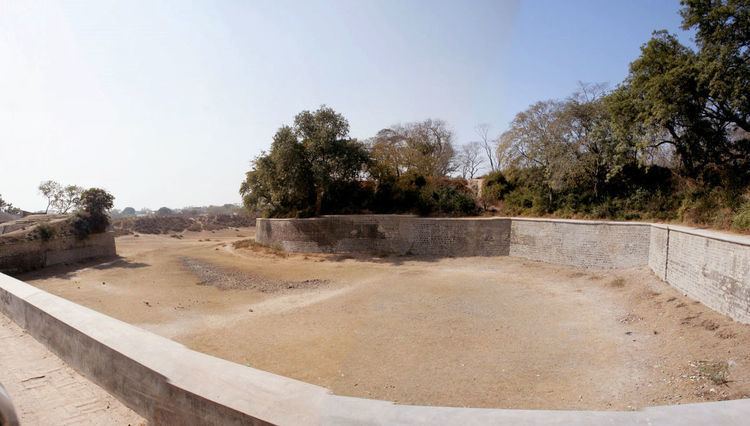 | ||
Similar Sabalgarh Fort, Mazagon Fort, Garchuk Lachit Garh, Riwa Fort, Hinglajgarh | ||
Aligarh Fort (Hindi: अलीगढ़ क़िला, Urdu: علی گڑھ قلعہ Aligarh Qila) also known as "bohne chor ka qila"(english-small thief's fort,is one of the strongest forts in India, is located in the city of Aligarh (The city was earlier named as Kol or Koil), Uttar Pradesh. It is also called "Aligarh Qila". It is situated on the Grand Trunk road and consists of a regular polygon, surrounded by a very broad and deep ditch.
Contents
A m u fort or aligarh qila uttar pradesh
History
It was built during the time of Ibrahim Lodi by Muhammad, son of Umar the governor of Kol, in 1524-25. Sabit Khan, who was the governor of this region during the time of Farrukh Siyar and Muhammad Shah, further rebuilt the fort. It became a fortress of great importance under Madhavrao I Scindia in 1759, and was the depot where he drilled and organized his battalions in the European fashion with the aid of French soldier Benoît de Boigne. During the Battle of Ally Ghur, it was captured from the Marathas under the leadership of a French officer Perron by Lord Gerard Lake's British army, in September 1803, since which time it has been much strengthened and improved. In the rebellion of 1857 the troops stationed at Aligarh mutinied, but abstained from murdering their officers, who, with the other residents and ladies and children, succeeded in reaching Hathras.
The fort is built on a hill, north of the Aligarh Muslim University at Barauli Marg. It has steep ravines, over 30 feet high, on every side, and bastions in every angle on the walls. Now Aligarh fort is in the control of Aligarh Muslim University. The university uses part of the internal area fort as location for its department of Botany. The fort has been the seat of many governors and other rulers of this land, including Sabit Khan, Surajmal Jat in 1753 and mentioned Madhavrao Scindia in 1759. The fort was expanded three times in 1753 by lieutenant Banasaur, commanding officer of contemporary ruler Surajmal Jat, to include a basement, an explosives warehouse and an air cooled kitchen.
Aligarh fort, as it stands today, is the work of the French engineers under the control of de Boigne and Perron. Presently, the fort houses a small primary school within its premises.
